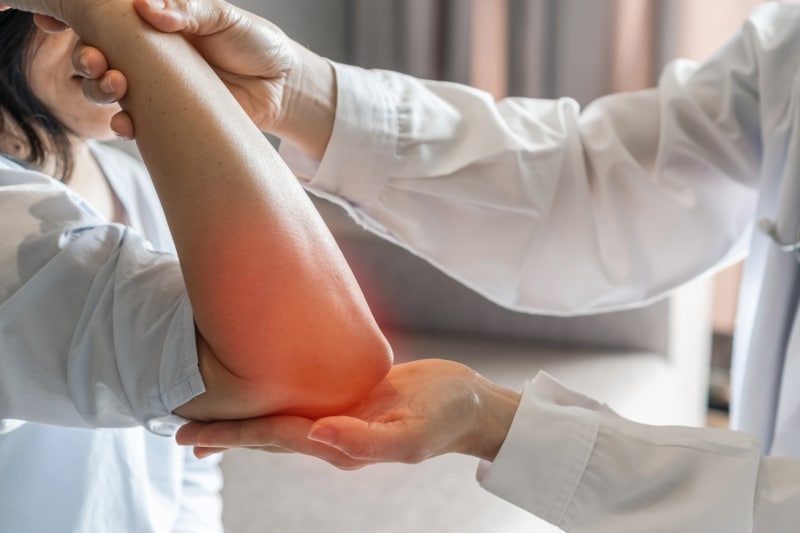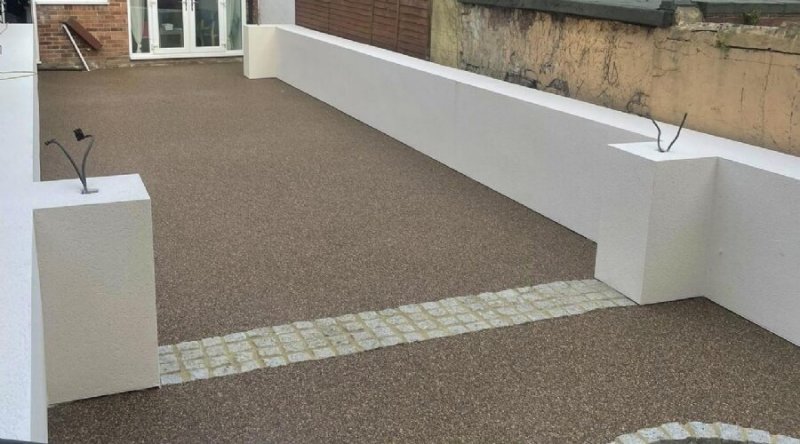
Arthritis, a broad term encompassing over 100 conditions, is a leading cause of pain, disability, and reduced quality of life worldwide. Characterized by inflammation of one or more joints, it can manifest as chronic pain, stiffness, swelling, and diminished range of motion, making everyday activities a significant challenge.
While there is currently no cure for most forms of arthritis, effective management strategies can dramatically improve symptoms, preserve joint function, and enable individuals to lead active, fulfilling lives. Among these strategies, physical therapy stands out as a cornerstone, offering a non-pharmacological, evidence-based approach to address the multifaceted challenges posed by arthritis.
This comprehensive guide aims to illuminate the vital role of physical therapy in arthritis management, providing individuals with the knowledge and practical insights to embark on a journey towards improved mobility, reduced pain, and enhanced overall well-being. It underscores that physical therapy is not merely a reactive treatment but a proactive investment in long-term joint health and functional independence.
Understanding Arthritis and the Indispensable Role of Physical Therapy
Arthritis affects individuals of all ages, with common types including Osteoarthritis (OA), Rheumatoid Arthritis (RA), Psoriatic Arthritis (PsA), and Ankylosing Spondylitis (AS). Each type presents unique challenges, but the common thread is the impact on joint health. Left unmanaged, arthritis can lead to progressive joint damage, muscle weakness, altered biomechanics, and a cycle of pain and inactivity.
This is where physical therapy becomes indispensable. A skilled physical therapist (PT) is trained to understand the intricate mechanics of the human body and how arthritic conditions disrupt them. Their role extends beyond symptom relief; they aim to:
- Reduce Pain: Through a combination of modalities, manual techniques, and targeted exercises.
- Improve Joint Function: By increasing range of motion, flexibility, and muscle strength around affected joints.
- Prevent Further Damage: By teaching joint protection strategies and optimizing body mechanics.
- Enhance Physical Capacity: Allowing individuals to perform daily activities with greater ease and independence.
- Educate and Empower: Providing patients with the tools and knowledge for self-management and long-term success.
The Initial Consultation: Your First Step Towards Recovery
The journey with physical therapy begins with a thorough initial assessment. This consultation is crucial for developing a personalized and effective treatment plan. During this session, your physical therapist will:
- Conduct a Detailed History: Inquiring about your pain levels, the nature and duration of your symptoms, daily challenges, medical history, medications, and lifestyle.
- Perform a Physical Examination: Assessing your range of motion, muscle strength, posture, balance, gait, and functional limitations specific to your daily activities. They will also palpate affected joints to identify areas of tenderness or swelling.
- Discuss Your Goals: Collaboratively setting realistic and meaningful goals, whether it’s walking further, returning to a hobby, or simply reducing morning stiffness.
- Formulate a Personalized Treatment Plan: Based on the assessment, your PT will outline a tailored program, explaining the proposed interventions and what you can expect from each session and the overall course of therapy.
Open and honest communication during this phase is vital to ensure your treatment plan aligns with your needs and expectations.
Core Components of an Arthritis-Specific Physical Therapy Program
An effective physical therapy program for arthritis is multifaceted, integrating a range of techniques designed to address pain, enhance function, and slow disease progression.
1. Pain Management Techniques
Reducing pain is often the immediate priority. Physical therapists employ various methods:
- Therapeutic Modalities:
- Heat (e.g., warm packs, paraffin baths): Increases blood flow, relaxes muscles, and reduces stiffness.
- Cold (e.g., ice packs): Decreases inflammation and numbs the area, effective during acute flares.
- Transcutaneous Electrical Nerve Stimulation (TENS): Uses low-voltage electrical current to block pain signals.
- Ultrasound: Delivers deep heat to soft tissues, promoting healing and reducing pain.
- Manual Therapy: Gentle joint mobilizations, massage, and soft tissue techniques to improve joint play, reduce muscle spasm, and alleviate discomfort.
- Posture Correction and Body Mechanics: Identifying and correcting postures or movement patterns that contribute to pain.
2. Therapeutic Exercise
Exercise is the cornerstone of arthritis management in physical therapy. It's often tailored to be low-impact and progressive, focusing on specific goals without exacerbating symptoms.
- Range of Motion (ROM) & Flexibility Exercises: Gentle movements designed to maintain or improve the flexibility of joints and surrounding soft tissues. Examples include active range of motion (moving the joint yourself) and passive range of motion (assisted by the PT). Regular stretching is crucial to combat stiffness.
- Strengthening Exercises: Essential for supporting and stabilizing affected joints. Weak muscles place greater stress on joints, increasing pain and instability. PTs will prescribe:
- Isometric Exercises: Muscle contraction without joint movement (e.g., pressing against an immovable object), ideal during acute pain flares.
- Isotonic Exercises: Muscle contraction with joint movement, often using light weights, resistance bands, or bodyweight. Focus is on controlled movements and proper form to protect joints.
- Endurance/Aerobic Conditioning: Low-impact activities that improve cardiovascular health, reduce fatigue, and support weight management, which in turn reduces stress on weight-bearing joints. Examples include walking, swimming, cycling, and aquatic exercises. Aquatic therapy is particularly beneficial as the buoyancy of water reduces joint load.
- Balance and Proprioception Exercises: Crucial for preventing falls, especially in individuals with joint instability or reduced sensation. These exercises enhance the body's awareness of its position in space.
- Functional Exercises: Mimicking daily activities to improve specific movements, such as reaching, lifting, standing from a chair, or climbing stairs, helping individuals regain independence in their routine.
3. Education and Self-Management Strategies
Empowering patients with knowledge is a critical component of physical therapy. This includes teaching:
- Joint Protection Principles:
- Using Larger/Stronger Joints: Distributing tasks to larger joints (e.g., using two hands to lift a pot instead of one).
- Avoiding Prolonged Positions: Regularly changing positions to prevent stiffness.
- Distributing Load: Using assistive devices or carrying items in multiple trips rather than one heavy load.
- Respecting Pain: Distinguishing between muscle fatigue and joint pain.
- Pacing Activities: Learning to balance rest and activity, avoiding the "boom and bust" cycle where overexertion leads to a flare-up.
- Body Mechanics: Proper techniques for lifting, bending, sitting, and standing to minimize joint stress.
- Assistive Devices: Guidance on the appropriate use of canes, walkers, splints, braces, or specialized footwear to offload joints, improve stability, or support weakened areas.
- Ergonomic Adaptations: Adjustments to workspaces, home environments, and daily tools to reduce strain on joints.
- Weight Management: Discussing the significant impact of body weight on joint load, especially in weight-bearing joints like knees and hips.
Special Considerations for Different Arthritis Types
While many principles apply generally, specific types of arthritis may require tailored approaches:
- Osteoarthritis (OA): Emphasis on strengthening muscles surrounding the affected joint, improving joint mechanics, and managing weight to reduce compressive forces.
- Rheumatoid Arthritis (RA) & Psoriatic Arthritis (PsA): During acute inflammatory flares, focus shifts to gentle range of motion, avoiding overstressing inflamed joints, energy conservation, and pain management. During remission, strengthening and endurance exercises are introduced cautiously.
- Ankylosing Spondylitis (AS): Focus on maintaining spinal mobility, improving posture, and deep breathing exercises to maintain chest wall expansion.
Adherence and Long-Term Success
Physical therapy is not a quick fix; it requires commitment and consistency. The home exercise program provided by your PT is paramount for long-term success. Regular follow-up appointments allow your therapist to monitor progress, modify exercises, and address any new concerns.
Learning to listen to your body, recognizing the difference between beneficial muscle soreness and detrimental joint pain, is a skill developed over time. Integrating physical therapy principles into your daily life, building a strong support system, and maintaining open communication with your entire healthcare team are vital for sustained improvement in managing arthritis.
When to Seek Physical Therapy and Important Disclaimers
Physical therapy is beneficial for individuals experiencing chronic arthritis pain, stiffness, reduced mobility, or functional limitations. It can be initiated at any stage of the disease. However, it is crucial to consult your physician before starting any new exercise program, especially if you have acute joint inflammation, severe pain, new or worsening symptoms, or other systemic health conditions. Physical therapy works best as part of a multidisciplinary approach, often alongside pharmacological management, dietary adjustments, and other supportive therapies.
Conclusion
Arthritis can present formidable challenges, but it does not have to dictate the entirety of one's life. Physical therapy offers a powerful, patient-centered pathway to reclaim control, reduce pain, and enhance mobility. By empowering individuals with personalized exercise programs, practical self-management strategies, and profound education, physical therapists equip their patients to navigate the complexities of arthritis with greater confidence and independence.
If you are living with arthritis, considering physical therapy is not just a treatment option; it is an investment in your future, paving the way for a more active, less painful, and ultimately more fulfilling life. Consult with a qualified physical therapist today to begin your journey towards improved well-being.







0 Comments
Post Comment
You will need to Login or Register to comment on this post!